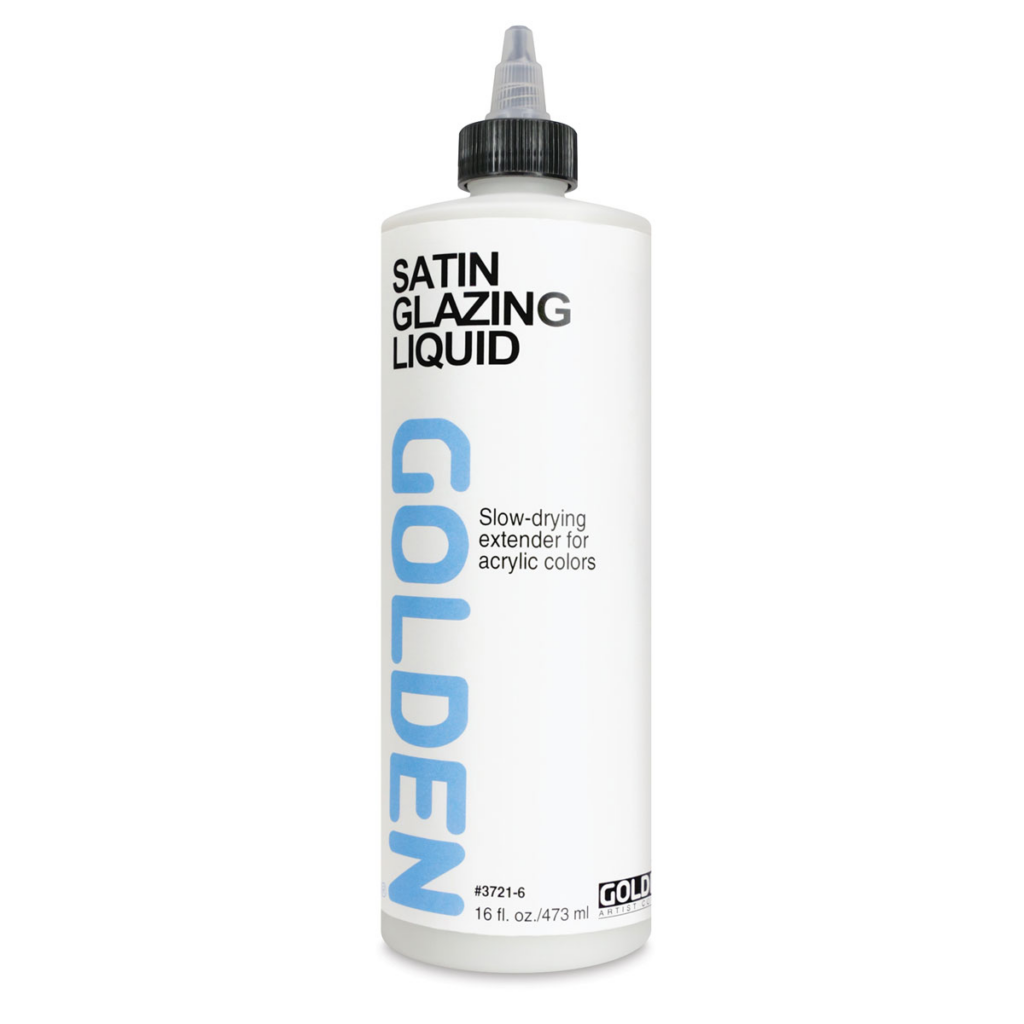Which works better on acrylic paint? Water or Glazer Medium
There are two ways to glaze acrylic paint: with water or with a glazing substance. Is one superior to the other? While both methods are acceptable, using glazing media provides a number of significant benefits.

Whichever acrylic paint glaze base you pick, it is critical to combine them appropriately. While it is important to avoid diluting the pigment significantly with water, you may add a glazing media in whatever ratio you like. Much of this is subjective and dependent on your painting technique and intended outcome.

How to Glaze Projects Using Acrylic Paint
The Advantages of Using a Glazing Medium
Many acrylic painters like glazing media because it maintains or enhances the shine or matte aspect of the paint. These mediums are available in two different finishes: gloss and matte. You’ll want to choose one that works well with the paint you’re using and the impact you’re attempting to achieve with the painting.
The second (and most significant) benefit of glazing media is that it maintains the stickiness of the paint. The medium includes a binder (or adhesive) that helps the blended glaze adhere to the panel or canvas as well as any underlying paint layers. On the other side, excessive water may erode the paint’s binders, resulting in flaking.
Glazing medium and paint may be used in any proportion, using as little or as much paint as necessary to get the desired effect. This is because the binder imparts the viscosity of thin, colorless paint to the medium.
Glazing Water’s Consequences
To a certain extent, water is an excellent glazing substance. As previously indicated, there is a danger of diluting the binder in the paint to the point where its adhesion capacity is compromised.

The basic guideline is that the ratio of paint to water should be 50%. Certain manufacturers recommend a maximum moisture level of 30%. Artists sometimes disregard these guidelines, especially when it comes to glazing.
You will notice whether your water has an insufficient quantity of paint. If the paint peels off when a stiff brush is used to paint over a thin coat, you’ve gone too far. It acts very much like watercolor paint. Click here to read about The Street Art Controversy: Crime Or Legitimate Form Of Art?
Gloss Medium and Water in a Diluted Solution
Additionally, by mixing an acrylic paint gloss medium with water, you may produce a distinctive glaze finish.
• A matte finish may be achieved by diluting equal parts of water and acrylic gloss medium.
• By increasing the proportion of gloss medium, the finish becomes more satin-like.
By definition, a straight gloss medium will generate a glossy surface.
You may alter these finishes in any manner you like to get the desired impact in your painting. Additionally, experiment with a variety of finishes to call attention to certain features in specific spots. For example, a high-gloss glaze may be necessary for the lake in your landscape, while a matte or satin finish may be required for the pine trees. This technique has the potential to produce some rather pleasing results.
As is traditional, the varnish may always be added if the finish does not come out precisely as desired or if you are dissatisfied with the final results. Additionally, they are available in two different finishes: matte and gloss.
Artists work in a variety of mediums, including oil, watercolor, pastel, gouache, and acrylic, each of which has its own set of pros and limitations. The following are some of the benefits and properties of acrylic paint that make it an excellent option for both beginners and professionals.
A Short History
In comparison to the centuries-old traditions of oil and watercolor painting, acrylic paint is a comparatively new medium. Due to the paint’ longevity, Mexican muralists such as Diego Rivera were the first to employ them on a wide scale.
These muralists introduced acrylic paint to American artists, and a number of Abstract Expressionists and other renowned painters, like Andy Warhol and David Hockney, started experimenting with the new medium. Acrylic paint became commercially accessible in the 1950s and has grown in popularity steadily since then, with new colors and mediums released on a regular basis.
How to Create an Acrylic Landscape
Acrylic Paint’s Characteristics
Acrylic paint is a very flexible and non-toxic material. While it is water-soluble while wet, it dries to a flexible, weather-resistant, and durable surface that enables the application of successive coats of paint without harming the previous ones.
What sets normal acrylic paint apart from other varieties is its rapid drying time. Due to the quick drying time, an artist may work in several layers without muddying the colors. A water spray bottle is essential to help the painting and palette dry more slowly. If you dislike this trait or just want more control, there are a variety of acrylic mediums available that extend the drying time and allow for wet-on-wet painting.
Extend the open (workable) term of your paint by using Golden Acrylic Retarder (Buy from Amazon) or any other kind. Additionally, you may use Golden Open Acrylic Paint (Buy from Amazon), which keeps its workability for a longer period of time, or Atelier Interactive Acrylic Paint (Buy from Amazon), which retains its workability longer when sprayed with water or the unlocking agent.
Acrylic paint is available in a range of packaging options, including tubes, jars, squeeze bottles and miniature ink bottles. Additionally, it comes in a range of thicknesses, with those in tubes being the most vicious and resembling oil paint. It is critical to properly seal the paint regardless of the container, but especially big jars and tubes, to prevent it from drying out.
Acrylic paint, like watercolor paint, may be diluted with water or other liquids and utilized similarly to watercolor paint. However, if you dilute your acrylic paint with too much water, it may crumble and scatter, leaving little color specks in your painting. If you’re looking for a particular fluid medium, consider liquid acrylic ink. Additionally, some glazing and thinning agents such as flow media may be used. By mixing this into the paint, you may help it thin. Because this medium is produced from the same plastic polymer as the paint, you may use it as much as you want.
As with oil paint, acrylic paint may be used in a variety of ways. While acrylic paint is recognized for its vibrant hues, a large number of them are interchangeable with those found in oil paint. Additionally, mediums are available that thicken and speed up the drying process of the paint, allowing it to be handled similarly to oil paint.

Paintable Surfaces
There are a variety of acrylic painting surfaces available. Acrylic paint is versatile and may be used on a variety of surfaces, including paper, canvas, wood, masonite, linen, concrete, and brick. Additionally, since no oil seeps through the paint and damages the surface, no surface preparation is required prior to painting it. However, if the surface is porous, water may quickly sink into it, thus priming it with gesso or another similar primer prior to painting may assist in paint adherence. Priming nonporous surfaces such as glass or metal is also a good idea.
Acrylic Paint is an Exceptional Medium for Crafts, Collage, and Mixed Media Projects.
Acrylic is ideal for crafts, collage, and mixed media work due to its flexibility, durability, adhesive properties, and low toxicity. However, since craft and artist acrylic paint are of different quality and composition, it is recommended that you use artist-grade paint when making artwork. Both, though, may be used to make crafts.
